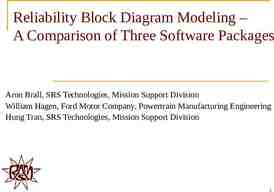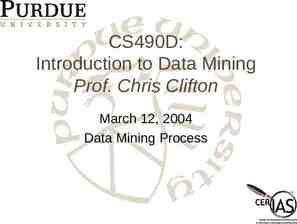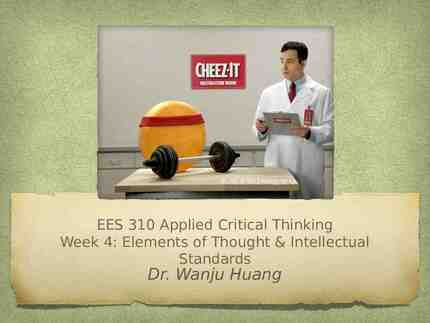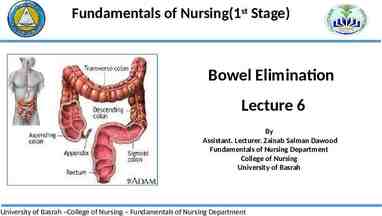Our Work: STEM Programs The Parker Ranch installation in Hawaii
13 Slides2.15 MB

Our Work: STEM Programs The Parker Ranch installation in Hawaii Alexandria Clark, Intern Office of Economic Impact and Diversity energy.gov/diversity 1 energy.gov/diversity

What is STEM? Department of Energy Science, Technology, Engineering, and Mathematics (STEM) education activities include curriculum development, competitions, summer and extracurricular course creation, undergraduate & graduate research fellowships, summer laboratory internships, teacher training, and others. 2 energy.gov/diversity

Objectives of STEM Activity Programs Attract and prepare students at any educational level to pursue coursework in STEM areas through formal or informal education activities Improve or expand the capacity of institutions to promote or foster education in STEM fields Attract graduates to pursue careers in STEM fields Provide training and experiential opportunities (fellowships, internships, traineeships) for college and graduate students in STEM fields Improve teacher (pre-service, in-service, and postsecondary) education in STEM areas 3 energy.gov/diversity

Student Educational Resources Energy Literacy - Essential Principles and Fundamental Concepts for Energy Education identifies seven Essential Principles and a set of Fundamental Concepts to support each principle. It presents energy concepts that, if understood and applied, will help individuals and communities make informed energy decisions. Energy Kids - a site run by the U.S. Energy Information Administration, has a wide range of activities for students and information about how teachers can put this site to use. America’s Home Energy Edu cational Challenge - With sponsoring from the US Department of Energy and the National Science Teachers Association , this program gives students the chance “to learn about energy, develop techniques for reducing energy consumption, and save money in their own homes by reducing household energy use.” Deadline for registration : November 18, 2013. See more at: http://energy.gov/diversity/student-educational-resources-stem 4 energy.gov/diversity

STEM Internships, Fellowships, and Mentorships Minority Educational Institution Student Partnership Program (MEIS PP) Offers talented undergraduate and graduate students summer internship positions with the Department of Energy and our National Laboratories, with the goal of reaching underrepresented students in STEM fields, such as women and girls. Positions involve scientific research or a focus on policy, business, and government relations. Deadline for application submission in March. Mickey Leland Energy Fellowship The Mickey Leland Energy Fellowship (MLEF), sponsored by the U.S. Department of Energy's Office of Fossil Energy, is a 10-week summer internship program that provides opportunities to students who are pursuing degrees in science, technology (IT), engineering, or mathematics (STEM majors). The goal of the program is to Improve opportunities for minority and female students in these fields, but all eligible candidates are encouraged to apply. Candidates who are selected will have the opportunity to work on focused research projects consistent with the mission of the Office of Fossil Energy. Deadline for application in January. 5 energy.gov/diversity

Minority Educational Institution Student Partnership Program Gain 10 weeks of substantive professional and technical career experience while working side-by-side with an assigned mentor who is a subject matter expert. Mentors help students tailor their practical work experience to their professional interests. For more information: http://www.doeminorityinternships.org 6 energy.gov/diversity

STEM Internships, Fellowships, and Mentorships cont. The American Indian Research and Education Initiative - Introduced in 2011, the Energy Department, the American Indian Higher Education Consortium and the American Indian Science and Engineering Society have partnered to bring STEM research and education funding to our nation’s Tribal colleges and universities and other U.S. universities around the country. This program funds student and faculty research teams to bring energy projects to tribal land. Clean City Workforce Development Program - Clean Cities, in the Office of Energy Efficiency and Renewable Energy (EERE) Vehicle Technologies Program, offers students across the country the opportunity to work with community-based Clean Cities coalitions. Students can work on a variety of projects that reduce petroleum in the transportation sector, including communication on alternative fuels, fleet analysis, and stakeholder outreach. See more at: http://www1.eere.energy.gov/cleancities/toolbox/internship program.html 7 energy.gov/diversity

Competitions: Student STEM Contests and Events The U.S. Department of Energy So lar Decathlon This challenges collegiate teams to design, build, and operate solar-powered houses that are cost-effective, energy-efficient, and attractive. The winner of the competition is the team that best blends affordability, consumer appeal, and design excellence with optimal energy production and maximum efficiency. The National Science Bowl Allows high school and middle school students to participate in a nation-wide competition to test their knowledge of STEM fields and encourage students to explore careers in STEM. High school and middle school students are quizzed in a fast paced questionand-answer format similar to Jeopardy. National Event: April 24 – 28, 2014 The Collegiate Wind Competition - sends undergraduate students through a multi-part challenge that will expose them to a variety of opportunities in clean energy. Beginning in 2013, student teams from 10 universities across the country will design and construct a lightweight, transportable wind turbine that can be used to power small electronic devices. The National Clean Energy Busine ss Plan Competition - designed to build regional networks of student-focused business creation contests across the country. Launched in 2011, the NCEBPC is part of the Obama Administration's Startup America Initiative, the White House campaign to inspire and promote entrepreneurship. Six regional organizations were funded under the competition to hold clean energy business plan competitions. 8 energy.gov/diversity

STEM Education Opportunities: Grads & Researchers Graduate Automotive Technology Education - this DOE program helps universities sponsor student fellowships and develop graduate-level curricula, with accompanying research, in five critical technology areas: fuel cells, hybrid drive trains and control systems, lightweight materials, direct-injection engines, and advanced energy storage. Computational Science Graduate F ellowship Program - provides outstanding benefits and opportunities to students pursuing doctoral degrees in fields of study that use high performance computing to solve complex science and engineering problems. application for 20142015 will be available late October 2013. The Stewardship Science Graduate Fellowship Program - designed to help exceptional graduate students earn their PhDs in areas of interest to stewardship science, such as highenergy density physics, low-energy nuclear science, or properties of materials under extreme conditions. Deadline August 2014 Energy Efficiency and Renewable E nergy Science and Technology Po licy Fellowship - serve as the next step in the educational and professional development of leaders in energy efficiency and renewable energy policy, providing an opportunity for scientists and engineers with relevant energy technology experience to participate in policyrelated projects at DOE's Office of Energy Efficiency and Renewable Energy in Washington, D.C For more information see: http://energy.gov/diversity/services/stem-education/stem-education-opportunities-grads-researchers 9 energy.gov/diversity

Student Training Diverse students come to National Laboratories and DOE headquarters to work with researchers and scientists. For more: http://energy.gov/scholarships&internships.htm 10 energy.gov/diversity

Women @ Energy Our new feature, View over 100 Women @ profiles of Energy, women across showcases a few the country, of our talented sharing what and dedicated inspired them to employees at the work in STEM, Department of what excites Energy who are them about their helping change work at the the world, Energy ensuring Department, America’s sharing ideas for security and getting more prosperity underrepresente through d groups engaged transformative in STEM, offering science and tips, and more. technology solutions. Only 24% of the STEM workforce is female, an alarming gap as over 51% of the More information at: http://energy.gov/diversity/listings/women-energy workforce overall 11 is female. energy.gov/diversity

EERE’s Education and Workforce Development Subprogram Goals: Education: Beginning at the K-12 level, ensure ongoing development of a workforce needed to carry out invention and scale-up of EERE technologies and processes Training: Ensure creation of standardized, highquality training programs including credentialing activities for workers to meet current EERE needs in all sectors of the economy; IT: Design and deploy advanced learning technologies that will enable high quality education and training materials and programs to be created rapidly, updated and made routinely available. 12 12 energy.gov/diversity

Thank You Alexandria Clark [email protected] Office of Economic Impact and Diversity, MESIPP Intern 13 energy.gov/diversity






